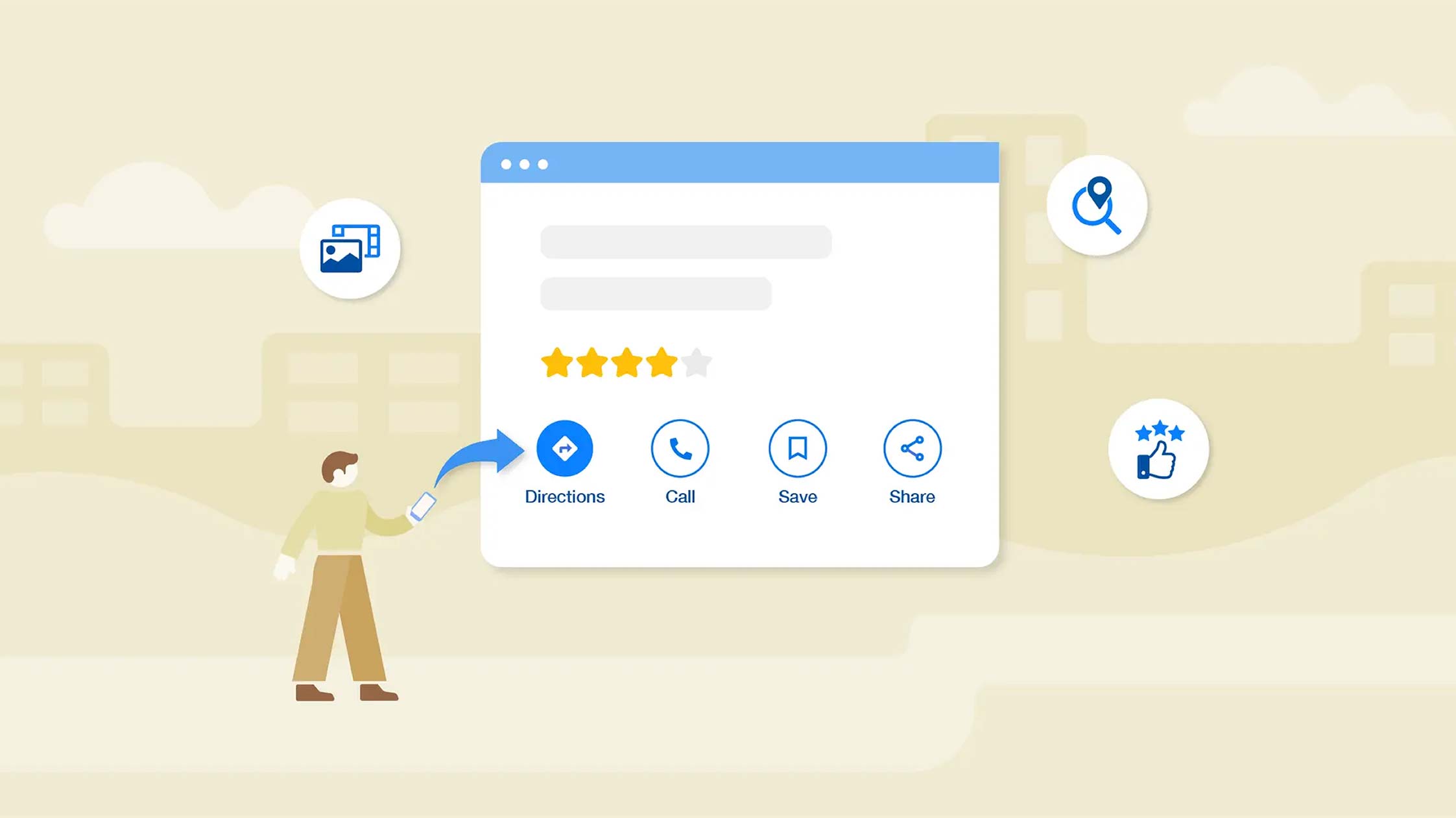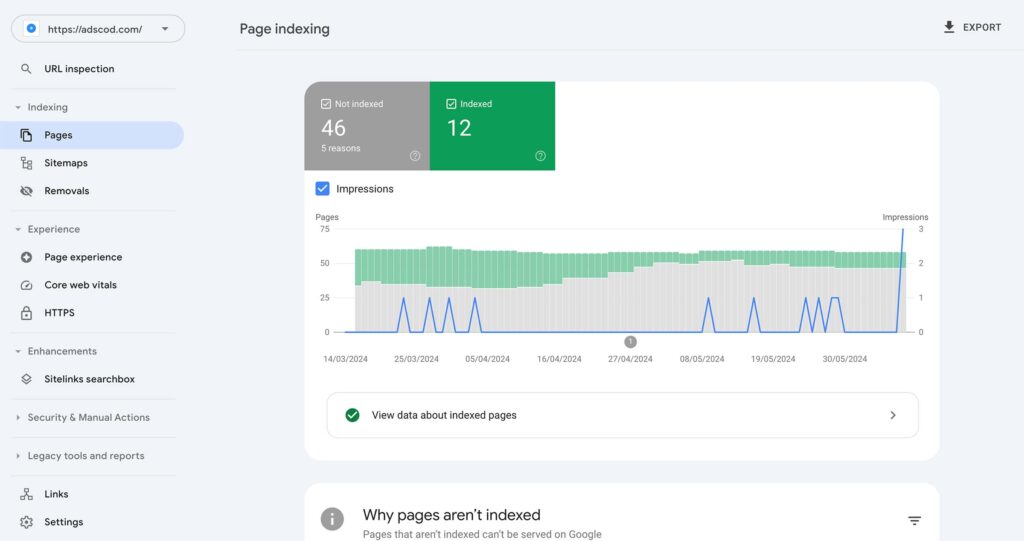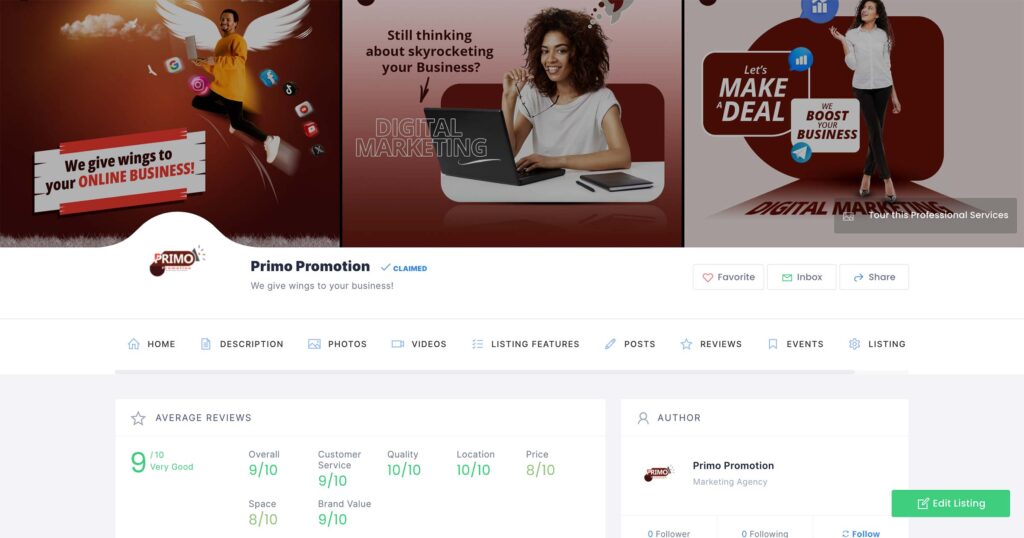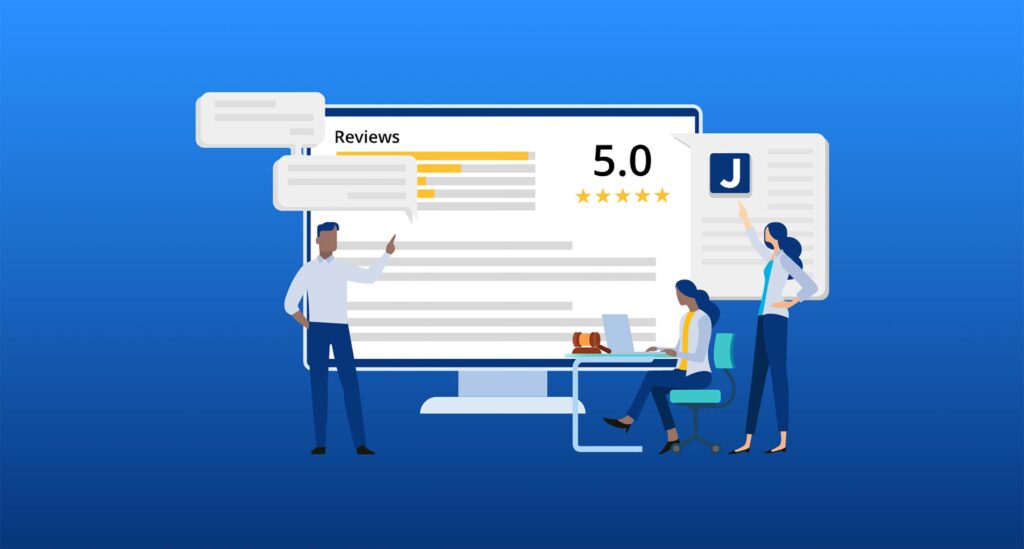
The 2024 ultimate local SEO checklist to boost your business’s online visibility
Local SEO is optimizing a website and Google Business profile to rank higher in local search results. It is helpful for businesses that rely on local customers because it can help connect local businesses to potential customers who are searching for something – products, services, or companies near them.
Local SEO therefore means having a local search engine optimization strategy focused on optimizing local listings, creating content targeting local keywords, generating quality backlinks, and concentrating on efforts targeting other local rankings factors that help the business be more visible in local search results on Google and other search engines.
As a beginner, you also need to have a new business strategy if you envision keeping on top of the mounting competition in the market. Using this local SEO checklist will enable you to generate more visibility and customers for your local business and keep on top.
Table of Contents
The local SEO checklist to give you the best local SEO optimization.
1. Set Up Tracking
It is crucial to track progress early on before making local SEO or any optimizations. This helps to create a baseline, and it will allow you to better understand how your optimizations are performing throughout your local SEO campaigns.
For improved local SEO ranking, these are the best tracking factors to consider:
- Keyword/rank Tracking
A proper understanding of how your business ranks for search items in your target localities will help you measure the impact of your campaign. With the growing demand for digital marketing services, data-driven approaches are a plus for any business.
Therefore, using local SEO-dedicated tools like BrightLocal is very recommendable. These tools have features like Geo-grid reports that are useful if you intend to get the most out of your Local SEO campaigns.

Search Console is a free tool from Google that provides detailed reporting and a wealth of data that will help you better understand your website’s performance, fix issues, and request indexation for new pages among other benefits.
In 2024, it is a must to have a Google Search Console account for better and data-driven digital marketing campaigns like Local Search Optimizations.
Like Google Search Console, Google Analytics is another free tool from Google that will allow you to better understand how your users are engaging with your website.
It gives you details about your users’ age, country, sex, country, city, devices, and general interactions. You can also set up conversion tracking for valuable actions like calls and form fills.
- Call Tracking
Undoubtedly, for any local business, a call tracking software like Call Tracking Metrics (CTM) or Call Rail can help attribute calls to specific marketing channels and sources.
It can also be helpful when trying to determine call quality. However, note that this might be not feasible for small businesses or marketing agencies.
- Facebook Pixel
Facebook offers its tracking tool called Facebook Pixel, which can be installed on your website to track and target users. Once installed, Facebook Pixel will enable you to reach new users, retarget website visitors, and create other helpful campaigns to support your digital marketing efforts.
2. Technical SEO Baseline
Before getting too far into any SEO campaign, it is recommended to first look at your website’s technical base. Doing it early enough will help you to ensure that your campaign is set up for success early on, and you will be able to identify any technical issues before they become worse.
Some of the key technical SEO elements to consider include the following:
- SSL Certification
Your website should be serving over the https: protocol to reduce risk and ensure safety. Depending on your hosting provider, this will either be free or paid, but you 100% need it because it is an important ranking factor.
- XML Sitemap
Your website’s sitemap.xml should be properly configured early on because it provides important information about your website’s pages, videos, and other files on your site as well as the relationship between them.
This means configured indexation settings for your website’s post types. If you are using WordPress for example, you can use the available configured plugins like RankMath or Yoast SEO.
- Robots TXT
The robots.txt file on your website is used to manage crawler traffic from search engines like Google, Bing, and other web crawlers. This can also be edited with either RankMath or Yoast SEO.
- Google Search Console indexation

Once your sitemap and robots.txt file have been properly configured, you will need to submit your website’s sitemap to Google Search Console.
Once you submit it, Google will provide a success message – validating that it can crawl it, provide insights about discovered pages, and regularly crawl it to discover new pages on your website.
In most cases, your website will likely have at least 3 sitemap.xml files to submit i.e. a main site, a sitemap for pages, and another sitemap for posts, so make sure you submit them all.
- Mobile-friendly Test
As a local business and with more increase in the number of mobile phone users, it is more likely that a significant amount of your website traffic will be using mobile devices. Therefore, this calls you to ensure that your website is mobile-friendly with the help of Google Testing Tool.
You can also do a manual review to ensure that all of your pages’ elements display as expected.
- WordPress Settings
A dozen of websites get launched with “Discourage Search Engines from indexing this site”, which is a signal to Google and other search engines that your website should not be indexed in search results. Please make sure you uncheck the box!
You can find it in the WordPress navigation. Once you log in, go to settings and look for Search Engine Visibility.
Once you have set up tracking and established a decent technical SEO baseline, you are ready to dive into the more exciting elements of implementation.
3. Set Up Local Listings
Although you can automate the creation of most (not all) of your listings with tools like BrightLocal, Yext, and Semrush, it is important to set the following profiles up manually to ensure there are no errors, duplicates, or other common mistakes made during the process.
However, before creating any new listings, it is essential to ensure that you don’t create duplicate listings. These profiles are the most important in your Local SEO campaign.
- Google Business Profile
You need to create and set up your Google Business Profile, and the sooner the better. This is because it generates the most results in terms of SEO for local businesses using competitor insights.
Google My Business is a free tool that allows you to manage how your business appears on Google Search and Maps. By verifying your business profile, you can provide important information about your business to customers and search engines. This includes information about your business such as your address, phone numbers, working hours, and products or services.
- Adscod Business Page

For local searches, Adscod.com often ranks highly on the search engine results pages (SERPs). It also functions as a search engine for users who want to find local products, services, companies, and places of interest in all capacities in Uganda.
This implies that it is a good opportunity to capture demand – it also has a free package. Therefore, Adscod.com is the best choice for location-based search targeting due to its location geo-targeting specialization.
To get started with adding and optimizing your Adscod Business Listing, go to: Adscod.com, Add Listing, then choose your preferred package.
We at least recommend the basic package for small and medium businesses that opt to take their local search engine to the next level, but if the budget allows, the premium package is the best take.
- Bing Places
Once you have optimized your Google Business Profile, you can import the information to Bing Places. If you already have a Bing Profile, you can claim it and synchronize the information with your Google Profile for free.
- Apple Maps
Most iPhone users usually do not install Google Maps App on their iPhone, their default is Apple Maps. So, adding your business to Apple Maps increases the likelihood of someone finding your business when searching for local products or services on their mobile device.
To create and optimize your business for free on Apple Maps, go to Apple Business Connect, and then copy your optimized business profile to your Apple Maps listings.
- Yahoo!
Claiming and optimizing your business listing on Yahoo will also help. To get started, search for your business on yahoo.com to see if your listing already exists. If so, claim it via Yext.
4. Optimize Local Listings

When it comes to Local SEO, you will need to ensure your profiles have all of the relevant business information, which often overlaps with Google’s local ranking factors.
Having all of this relevant business information means your profile is already optimized. However, it is also necessary to note that this should be regularly updated and maintained for accuracy – for both users and search engines.
This is how to ensure your local profiles like Google My Business, Adscod, Bing, Yahoo, and others are 100% optimized:
- Claimed/verified
- Business name, address, and phone number known as NAP information
- Business categories – primary and additional categories
- Working business hours
- Business description
- Video/photo uploads, including logo and cover photo
- Website URL link
Essentially, whether you are looking at Google, Adscod.com, Bing, or any other profile, you will need to be sure your listing is 100% complete with information that is relevant to your business’s products and services.
5. Create and Optimize Social Profiles
Since social media profiles are huge trust signals for search engines and users, it is essential to get them correctly. You can do this by creating high-quality photos, posts, accurate NAP information, business categories, page descriptions, and other strategies.
Please note that because you feel negatively about a certain platform, it does not mean your customers feel the same. Surprisingly, your customers and potential clients could be more active on that specific platform!
For most local businesses, you will not need to be on every social media platform, but these are some of the platforms you will have to consider in the first stages of your social media encounter:
- Facebook: This works for all local businesses no matter what due to its popularity with a huge number of daily users. Automatically, with this huge number of users, your customers are available!
- Instagram: Known as a platform for the GZ generation, Instagram is another social media platform with a large number of everyday users. As a result, it will not be a good place for a plumbing company, for example, it can be a great deal for fashion companies, boutiques, restaurants, events management, and alike.
- Twitter/X: Probably the least applicable because it is really difficult to build a following on Twitter/X compared to other platforms. However, ever since, Elon Mask took its ownership, a lot has changed and it still changing. We hope it will be easy to build the following in a few years to come with new monetization initiations.
- LinkedIn: This is great for all businesses, and it can be helpful for internal efforts like recruiting motives.
- YouTube: This has emerged as a beneficial platform for businesses that create helpful how-to content, and it is here to stay being considered the third best-used platform every day after Facebook and Google.
- TikTok: If you intend to capture someone’s attention before they scroll down, this is your best platform due to its short-form capabilities.
Note: You are recommended to audit competitor profiles and their user engagements to determine where they are spending their time and effort to inform your decision about which social channels might be a good fit for you.
6. Generate Monthly Reviews
Now that you have a solid foundation in place between tracking, technical SEO, and local and social profiles, it is time to generate reviews. Ongoing reviews will serve a social proofing role to help you establish your business as a credible source for a product or service.
It is very helpful for your business to regularly generate reviews across multiple profiles, such as:
- Google reviews

Generating reviews to your Google Business Profile can make a BIG impact when it comes to ranking in the local search. This is because Google reviews are a ranking factor when it comes to Local SEO.
- Facebook reviews
With no doubt, Facebook will be a valuable social media channel when it comes to building and engaging with your local community. Obtaining reviews for your Facebook page will serve as social proof for your local business, and encourage customers to take more valuable actions.
Facebook reviews are also a source of Bing, so you will need to ensure that you have a good star rating. Facebook often appears high in search results for branded searches, adding further reason to get reviews.
- Adscod reviews
Like Google and Facebook reviews, Adscod.com can also add an extra layer of social proofing, and encourage potential customers to take action when searching for local products or services offered by your business. So, make use of it!
In terms of generating reviews, these are just the basics that you need to cover. In some industries, there may be other profiles that can benefit from receiving regular reviews.
7. Build Ongoing NAP Citations
Accounting for over 10% of local ranking factors, local citations – also called NAP citations can be a great win for your business. This includes location data, NAP consistency, and citation volume.
Citations are usually any web mention of your business’s name, address, and phone number. Ideally, this also includes a link back commonly known as a backlink to your website.
Syndicating NAP information across different websites also improves accessibility. Simply, it ensures that your business is easy to find – no matter where potential customers are looking from.
Additionally, local directories are such an easy win for Local SEO, but most businesses do not get it right which hurts their business in the long run.
8. Create Niche Citations and Profiles
In addition to general citations like Adscod.com, there are more industry-specific websites where you can list your business. Often, these websites rank in local search results. For example, in the hotel and tourism niche, bookin.com and tripadviser.com are a better fit. This can be a great way to leverage parasite SEO for any local businesses.
9. Create An Offer
On your checklist, you should have a fairly strong SEO baseline, and it should be very easy for people to find you when searching for anything related to your business.
It is now key that when people find you, they have a good reason to contact you! To establish this effectively, create an appealing offer.
Your offer should meet at least 2/3 of the following criteria:
- Unique
Let your offer make you stand out in the market by having a unique offer. This can be a great way to build your brand and differentiate yourself from the competition. However, in certain industries, it can be hard to get away from industry-standard offers.
- Accessible
Whatever your offer may be, ensure that it is easy to find on your website, and at least mentioned on your profiles like Google My Business. A great way to ensure that your offer is accessible on your website is to include its viewpoint across devices.
- Low risk and guarantee
Additionally, your offer should be low risk, and it should generally be free. It can also be important to guarantee something such as a set time frame.
Please make sure you have a unique landing page and form for your profile offer. This will make it easy to add more details about the offer, and it allows for an easy tracking setup.
It is also important to note that some offers may not work as you anticipate, and it is okay. You can go ahead and test new offers and learn what works. For many businesses, you will not need just a single static offer.
Some businesses will benefit from seasonal offers, and others will benefit from a mix of offers.
10. Consider Website Accuracy
By default, your website accurately represents the products and services you offer. All of your business’s products and services should be accurately represented on your website. Better create a prioritized list, or have your client create one for you.
After comparing it to competing websites, determine a good site structure, and build your site’s navigation around your core product or service offerings.
Each of your pages must meet the following criteria:
- Personalization
People buy from people, especially when it comes to local businesses. Add personalization to your pages by including key team numbers. This can help build trust and build your brand big.
- Call-To-Action (CTA)
Let customers know what action they should be considering when landing on your product or service page. Include a CTA in the viewpoint of whether they should be calling, filling, out a form, or buying a product.
- Reviews
Reviews in the form of testimonials will help you build trust with prospective customers by showcasing relevant product or service reviews on your pages.
11. Add and Update Brand Pages
A business’s brand is a key element when it comes to ranking, generating traffic, and building trust.
For your website, this means creating and refining the following pages:
- About page
Your website should have an “About Us” page that provides comprehensive information about your business. This should include its history, mission, vision, core values, key founders, and other important information.
Not only does this help provide social proofing, especially for established businesses, but also can help to build a company’s knowledge graph.
- Team page(s)
At a minimum, local business sites should have a single team page that includes relevant team members and showcases their awards, and other accolades achieved. Besides building trust, it helps to create a level of personalization and uniqueness.
- Lead magnet
As mentioned above, your website should have an appealing offer and a page with detailed information about it for improve local SEO.
- Contact page
Having a general contact page can help segment tracking, and it provides a clear alternative contact option for people who may have questions and are not necessarily looking to buy.
- FAQ page(s)
A Frequently Asked Questions (FAQ) page can be of great importance! This can help to create more informed prospective customers and reduce time spent answering basic questions on calls or meeting with prospects.
- Testimonials/reviews
Depending on your business, you may need a simple testimonial page or a more complex case study directive on your website. This is to further add social proofing and build trust with your website visitors by showcasing success stories.
12. Encourage Trust on Your Website
This is about getting more reviews and strengthening them repeatedly. These are some elements you will need to consider adding to your website to encourage trust:
- Product/ service page pages with relevant reviews.
- Product/ service pages with accurate and sufficient descriptions.
- Social proofing is prominent on high-value pages.
- Team member pages with each person’s credible biography.
- Trust badges and awards appear prominently.
13. Ensure Web Pages are Optimized
- Keyword Mapping
Each page should have a target keyword or group of keywords for which you intend it to rank. There are professional tools like Semrush that will help you to perform excellent keyword research, and map these keywords to target pages.
- On-page SEO
Each page should have an optimized title tag, headings, and images. Surfer SEO is a great tool to help you get a loose score for your optimizations.
While it is important to include your keywords, it is also important to not overdo it and ensure that your page provides value and reads well for the users. You will also need to include your high-value pages for example products and services pages in your website navigation.
- Content Uniqueness
Each page should be unique which means there should not be a large percentage of content that is identical to other internal pages or competing websites. Having unique content will improve your website quality thus higher advantages of ranking highly in search results.
- URL Structure
Your website should follow a logical URL structure to help users and search engines understand your website more easily. Because of how websites like WordPress display pages, this can help to keep things more organized on the backend. Using a tool like Screaming Frog can help you understand your website’s structure with a visual representation.
- Internal Linking
Pages that are typically related to each other should all internally link to each other. For example, a signup page should be linked to a page where a user can add his or her sign-up information, then this page leads to a confirmation page, and so on.
For a better experience, you need to be sure that you have a healthy number of internal links to pages that you want to rank. Tools like Ahref or Screaming Frog will help you to understand how many internal links a page has, and then compare it to the competition.
- Image Optimization
Each page should have unique original images – not stock photos with a relevant file name, Alt Text, formatted for web such as WEBP, and compressed to enable faster loading time.
14. Add Schema Markup
Schema Markup refers to an additional code that can be added to specific web pages to further enhance how search engines understand your website’s pages. For all local businesses, there are a few types of Schema Markup that we recommend:
- LocalBusiness Schema
You can use the LocalBusiness Schema Markup type to help Google better understand information about your business. This includes your location, services, additional web properties like social profiles, and other information.
This is usually best when you use your website homepage or landing page to increase your ranking power.
- Webpage and Article Schema
This is another schema that can help you to improve your visibility. If you are using WordPress, you can specify which markup to choose using RankMath or Yoast which will automatically add it for you.
- ServiceType Schema
For service pages, use the Service Schema Markup type to clearly define your services. This includes the name of the service, URL, image, and other helpful information like the area you serve.
This works best for service area businesses as it helps Google and other search engines to understand your service offerings better. Make sure that each element contained in the schema markup is represented in the page’s source code.
It is also important to test it after implementation to ensure that your code is valid using the Schema Markup Validator.
15. Leverage Blog Content
In addition to your service and brand pages, you must have some pages that are informative and relevant to your services. This is because topical relevance can be a great way to give your site a boost.
That is – the more quality content your website contains for a given topic, the better those pages will rank in the search results. So far one of the best ways to get ideas for blog-related content is to start with itching questions related to your products or services.
You can apply filters to include questions that people are asking about the topic, then you can select keywords to build a list of blog content ideas that you believe are related are relevant.
It is so important to consider the Keyword Difficulty (KD) score metrics – which estimate how easily you can rank for the keyword. You will be able to dive deeper into the data and find some good opportunities due to how Google displays local search results. Some other common content types include How-to, (Y) Tips, DIY Guides, and FAQs.
16. Format Content for Video
Please understand that not all of your content will easily translate to a video, but some will do. It is up to you to determine whether or not your content will make a good video with keyword research and filtering by video SERP features, competitor research, or using YouTube’s suggest feature.
To maximize efficiency, you can create a YouTube video and then use the transcript to create a website article, social media posts, etc. for wide-reach opportunities.
17. Optimize Videos
To benefit more from your videos, make sure they are well-optimized using these techniques:
- Create an attractive thumbnail.
- Use keywords in your Title, Description, and Hashtags.
- Add description links to other relevant video content.
- Make sure your description contains business name, address, and phone number information.
- Embed your videos on relevant web pages.
Having these techniques right will enable you to get more exposure that will eventually lead to real engagements.
18. Promote Your Content
For content like big posts and videos, you need to maximize visibility and engagement by promoting your content across other channels. To achieve this, there are several preferences that you will need to consider first and they include:
- Social Media Posts
It is of great benefit to incorporate your blog and video content into your social strategy. This is because social media platforms have become a daily use case for every adult in the world – which gives us all a free opportunity to sell whatever we offer to them as long as it adds value to their wellbeing, they will pick interest.
- Facebook Groups
Joining relevant Facebook groups or creating your own will push your blog or video content far for more local SEO and online visibility. However, it is important to not spam in these communities – just add your website or YouTube video links with attractive captions.
- Email Newsletter
It is recommended to have a periodic newsletter whether weekly, monthly or quarterly from where you will share your content with your email contacts. It is good when you offer them exclusives in their inbox which cannot be found anywhere else while referring them to do something on your websites.
- Internal Engagement
By default, any serious and future-focused business must have its DNA and it starts with its staff members. Better encourage engagement from team members by sharing your content with them because they also have a following that they influence.
- Local Public Relations
It is also helpful if you can consider pitching your content to local news outlets. This will give your business more exposure since these news outlets already a huge following.
19. Get Quality Backlinks
No matter the industry you are in, you will need to generate quality backlinks consistently. For you to achieve consistent growth over time, you will need to be generating links from various sources that include the following.
- Industry-specific profiles and review sites.
- Host noteworthy events and promotions for local Public Relations purposes.
- Share your experience and expertise with local news outlets.
- Find competitor backlink gaps for better ideas.
20. Enhance Website Performance

Core web vitals are a ranking factor, meaning that you will need to consider how each of your web pages performs. Google Page Insights can help you better understand how a specific page performs.
Usually, results from Google’s Page Speed Insights are on a page-by-page basis. Therefore, performing a home page audit is not representative of page speed for other pages on the sight. You will need to focus on the items that are likely to have the biggest impact upon fixing them. In most cases, images are the biggest problem for most sites.
Using tools like Smush or Imagify, will help to fix these issues at scale. However, you should only do this retroactively and not regularly if you are optimizing images before creating a page or post. We recommend aiming for a load time of less than three (3) seconds or trying to exceed the load times of top-ranking competitors.
Conclusion
In conclusion, this local SEO checklist 2024 provides a comprehensive and updated guide for businesses looking to improve their local search presence. With search engine algorithms constantly evolving, keeping up with the latest best practices is crucial for staying competitive.
The checklist emphasizes the importance of localized content, mobile optimization, and creating a seamless user experience. It also emphasizes the significance of leveraging online reviews, managing local listings, and monitoring key performance indicators for improved local SEO.
Overall, following this local SEO checklist 2024 can significantly enhance your business’s visibility in local search results, attract more relevant traffic, and ultimately drive conversions. It serves as an invaluable resource for businesses aiming to strengthen their local online presence and reach their target audience effectively in 2024 and beyond.
If you need any assistance with with local SEO or Search Engine Optimization services in general, feel free to send us an email at adscodservices@gmail.com.
To add your business on Adscod listing, click here.
Or send us email at support@adscod.com.

Leave your comment